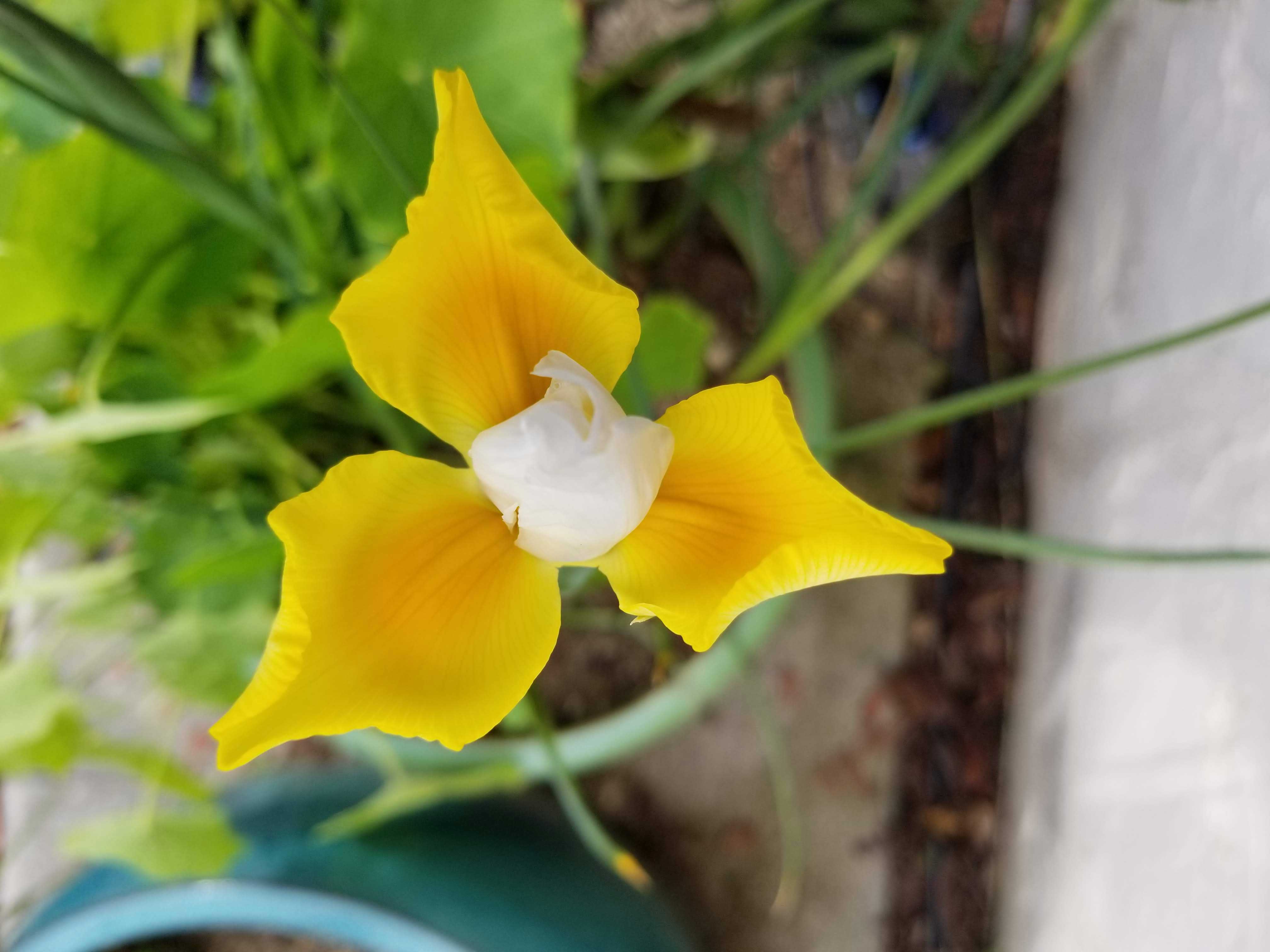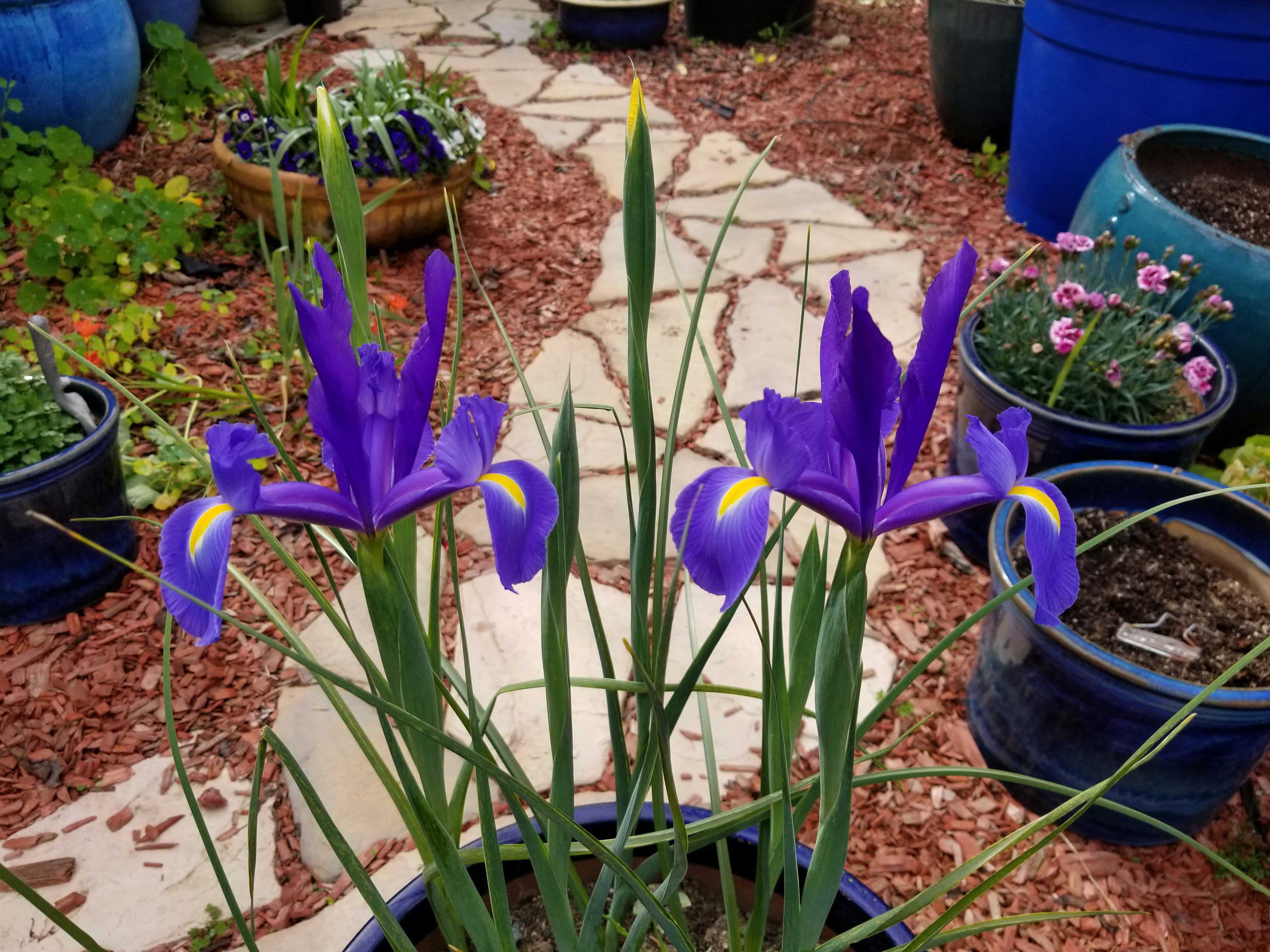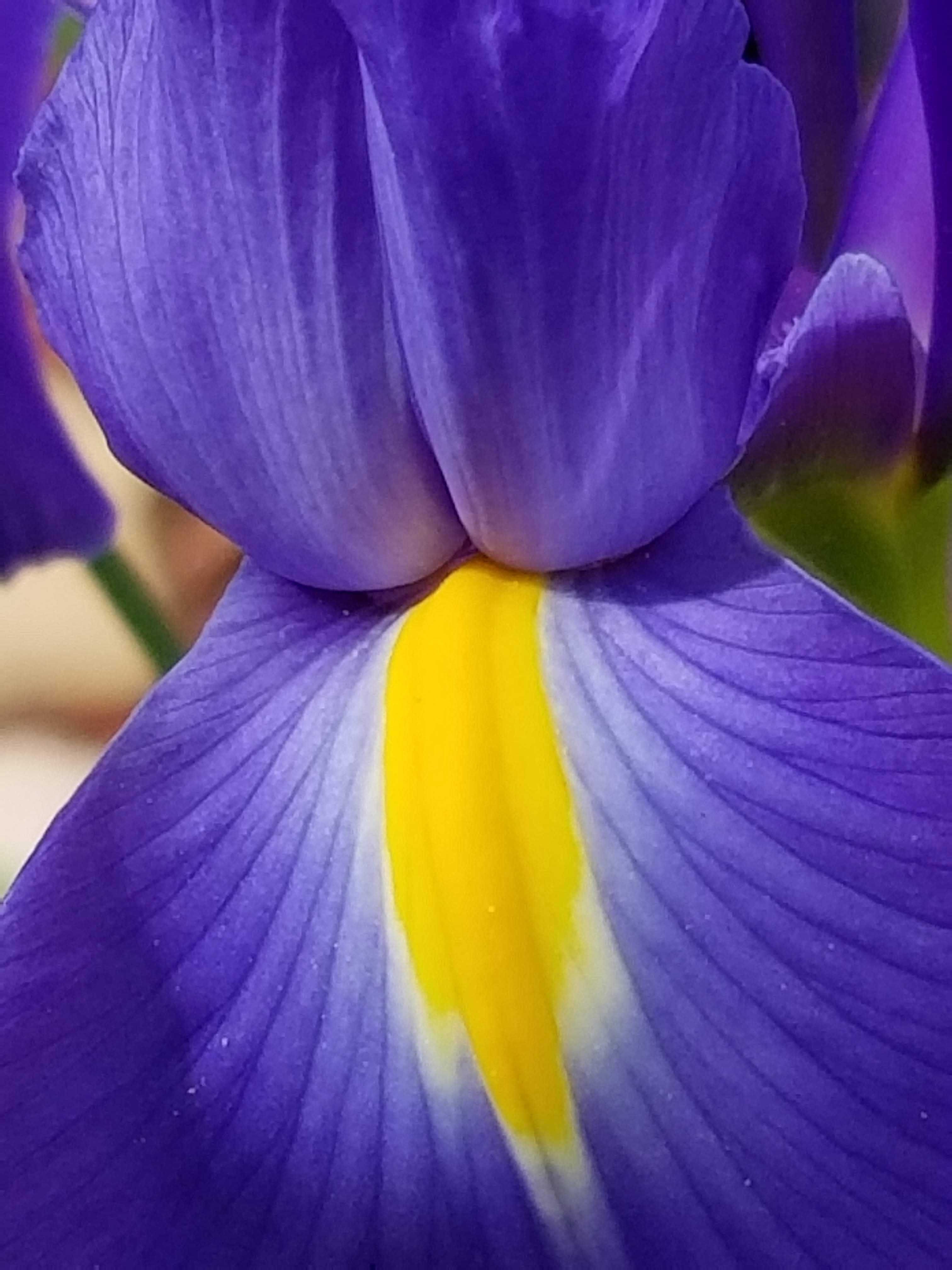In our Sunnyvale garden, over the years, we have planted Dutch iris in many locations, both in the ground and in containers. The flowers are spectacular and another sign that spring has arrived. The bulbs naturalize so you can reliably anticipate them every spring.
The Dutch iris bulb is about 4 inches in diameter and the plant can reach a height of about 24 inches. It has narrow linear green leaves and bears largish blue to yellow to white flowers. They do not have any fragrance. They mainly bloom in March–June in Sunnyvale (USDA zone 8-9)
Dutch iris (Iris x hollandica), is a hybrid iris developed from species native to Portugal,Spain and North Africa (Iris tingitana × Iris xiphium). Two varieties of Iris xiphium (var. praecox) from Spain and (var. lusitanica) from Portugal, were crossed with Iris tingitana (from North Africa). This was carried out by a Dutch bulb firm ‘Van Tubergen’ (based in Haarlem) in the 19th century.
Outdoor Beds
Dutch irises perform best in soil that provides good drainage. Find a location where the soil drains well. If there are still water puddles 5-6 hours after a hard rain scout out another site. Or amend the soil with the addition of organic material to raise the level 2-3″ to improve the drainage. Peat moss, compost, ground bark or decomposed manure all work well and are widely available.
Site your Dutch irises where they will receive full sun.
Dig holes and plant the irises 4″ deep and 3″ apart. The bulbs look like small pointed onions. Plant with the pointed end facing upwards.
After planting, water well, gently soaking the soil to settle it around the bulbs. In Sunnyvale foliage and flowers will wait until winter’s cold has passed and will develop in the spring.
When in bloom, feel free to cut iris flowers for spring bouquets. This will not hurt the plants.
After blooming has finished for the season leave the foliage in place; don’t cut it off. The leaves will gather sunlight, create food through photosynthesis and strengthen the bulbs for the future. Water as needed during active growth periods; about 1″ of moisture per week is a good estimate.
During the summer the leaves will yellow and die back as the plant slips into dormancy. Foliage many be removed at this point. Your Dutch irises will rest for a few months before beginning the next growing cycle.
Pots, Barrels, Tubs & Urns
Fill your containers with good quality, well-drained soil. Almost any commercially available potting medium will work fine. Make sure there are adequate drainage holes; iris bulbs must never sit in waterlogged soil or they will rot. Dutch iris plants are tall and slim. Plant them in large containers and add other bulbs, perennials or annuals to fill out the area around their slender ankles.
Site your Dutch irises where they will receive full sun.
Dig holes and plant the irises 4″ deep and 2-3″ apart. The bulbs look like small pointed onions. Plant with the pointed end facing upwards.
After planting, water well to settle the soil around the bulbs. In Sunnyvale foliage and flowers will wait until winter’s cold has passed and will develop in the spring.
When in bloom, feel free to cut iris flowers for spring bouquets. This will not hurt the plants.
After blooming has finished for the season leave the foliage in place; don’t cut it off. The leaves will gather sunlight, create food through photosynthesis and strengthen the bulbs for the future. Water as needed during active growth periods; about 1″ of moisture per week is a good estimate.
During the summer the leaves will yellow and die back as the plant slips into dormancy. Foliage many be removed at this point. Your Dutch irises will rest for a few months before beginning the next growing cycle.












